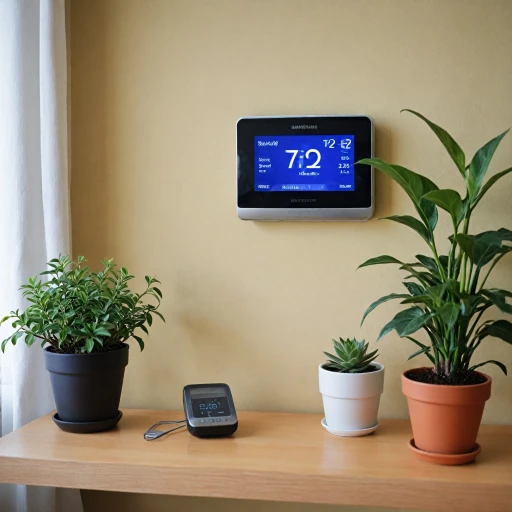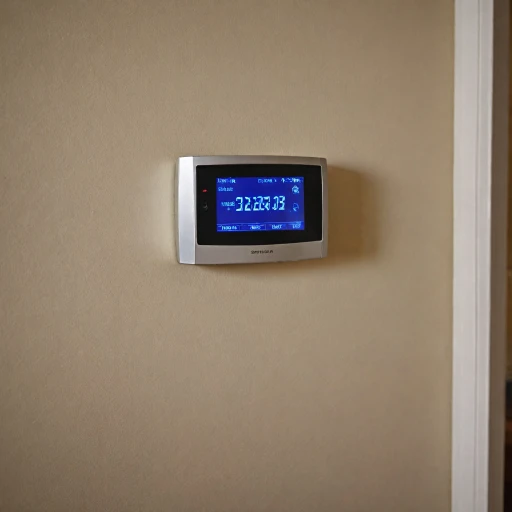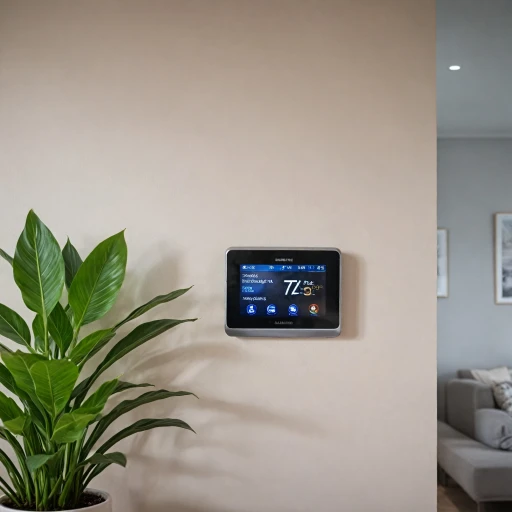
Understanding the Role of the C Wire
Demystifying the Common Wire in Smart Thermostat Systems
When it comes to smart thermostats, understanding the birds and the bees of wiring is crucial, particularly when you're dealing with popular systems like the Nest. A central question that frequently arises is about the role of the Common wire, commonly known as the C wire. If you dive into the mechanics, these wires support the continuous power needs of a thermostat. The C wire essentially acts as a dedicated pathway connecting the thermostat to your HVAC system's transformer, ensuring your device is supplied with constant power. This is especially significant for systems where heating and cooling configurations are intricate. Its role is integral because smart thermostats, with their multitude of features, typically demand more consistent power than their more traditional counterparts. Without a C wire, there is a chance that your system may experience fluctuating power levels, and this can affect the performance and reliability of a smart thermostat. However, that doesn't necessarily mean you're out of luck if your current setup lacks one. Some Nest thermostats, for example, operate without needing to be directly connected to a C wire, which will be explored further in the next sections. Understanding the intricacies of thermostat wiring helps users make informed decisions about installation and compatibility. While some turn to online platforms like Amazon to purchase add-ons or transformations, others explore innovative solutions that completely bypass the necessity of a C wire. Moreover, comprehending the benefits of a Nest thermostat without a C wire can be surprisingly advantageous. For an in-depth look into these aspects, you may find this NYSEG Nest thermostat guide informative, especially when weighing power options and system compatibility.Nest Thermostats Compatible Without a C Wire
Compatible Nest Thermostats Without a Common Wire
Many consumers are curious about which Nest thermostats can operate without a C wire. A compatible Nest can be a real game changer for those looking to upgrade their HVAC system without the need for installing additional wires. Though the C wire, or common wire, is generally used to provide continuous power to a thermostat, some smart thermostats, like the Nest, have been designed to work efficiently without it. Nest offers several models that can function without a C wire, thanks to their advanced technology. The Nest Thermostat E and the Nest Learning Thermostat are both examples of models that often work in such setups, though compatibility can depend on the specifics of your heating and cooling system. These thermostats are equipped to draw power in innovative ways, such as using power stealing techniques from existing wiring like Rh and Rc, or G wires. For those interested in the technical specifics, the Nest Learning Thermostat, which has gained popularity on platforms like Amazon, features sophisticated power management that allows it to perform efficiently without the need for a dedicated C wire in many cases. This is advantageous for users who may have older HVAC systems lacking a common wire. Before proceeding with any purchase, it's crucial to understand your system's requirements. Identifying whether your existing wires have enough capacity to support the thermostat's power needs without a C wire is essential. If you're keen to explore how Nest thermostats adapt without a common wire, this comprehensive insight into understanding the benefits of the NYSEG Nest thermostat can illuminate why these models are often recommended for varying installation scenarios, accommodating different HVAC infrastructures.Installation Tips for C Wire-Free Nest Thermostats
Setting Up Your Nest Thermostat Without A C Wire
Installing a Nest thermostat without a common wire (C wire) can seem daunting, but with the right approach and tools, it’s entirely feasible. Even if your HVAC system lacks a C wire, Google's Nest has designed solutions to ensure your thermostat operates seamlessly. One of the primary methods involves using Google's Nest Power Connector. This accessory acts as a substitute for the C wire, bridging the gap to provide continuous power. It’s particularly useful for systems where installing a new thermostat wire isn't an option. You can find detailed instructions on platforms like Amazon, where the connector is also available for purchase. Before you start, here's a brief rundown to guide you through:- Check Compatibility: Not all HVAC systems require a C wire. Inspect your current system's wiring diagram to understand its setup. If unsure, consult with a professional.
- Power Off First: Safety first! Turn off your HVAC system at the circuit breaker before handling wires or starting installation.
- Use the Nest Compatibility Checker: This tool will inform you if your system needs the power connector. It's a helpful step to avoid unnecessary efforts.
- Install the Nest Power Connector: Follow the instructions provided with the device. It usually involves connections at the furnace or air handler, linking the power from your heating and cooling system to the Nest thermostat.
- Secure the Thermostat: Once connected, attach the thermostat to the wall and link it to your home's Wi-Fi. This enables the smart capabilities, such as learning patterns and adjusting to preferred temperatures over time.
Benefits of Using a Nest Thermostat Without a C Wire
Advantages of a C Wire-Free Smart Thermostat
Opting for a Nest thermostat that functions without a C wire offers numerous benefits that can enhance your overall experience with a smart thermostat. Here are several advantages you may find appealing:
- Simple Installation: Installing a Nest thermostat without the need for a C wire simplifies the process, particularly in homes where rewiring can be problematic or the current thermostat setup lacks a common wire. This makes upgrading to a smart thermostat more accessible to many homeowners.
- Versatile Compatibility: A C wire-free Nest thermostat is compatible with various HVAC systems, including those where adding a common wire is not feasible. This versatility allows the thermostat to work with a range of heating and cooling setups.
- Cost Efficiency: You might avoid the costs and hassle associated with hiring a professional electrician to run a new C wire through the walls, saving on installation expenses while still enjoying advanced thermostat features.
- Energy Savings: Using a Nest thermostat can lead to improved energy management, aiding in reducing heating and cooling costs. These thermostats are designed to learn your preferences over time, optimizing your system's efficiency.
By understanding these key benefits, you can make a more informed decision about whether a Nest thermostat without a C wire fits your home and budget. As technology advances, smart thermostats like Google's Nest models offer increasingly sophisticated energy management, which can significantly contribute to both comfort and cost savings.
Potential Drawbacks and Considerations
Considerations When Using a Nest Thermostat Without a C Wire
While using a Nest thermostat without a common wire can offer flexibility in installation, it's crucial to be aware of some potential drawbacks and considerations.- Power Reliability: The absence of a C wire means the thermostat might rely on the existing heating and cooling system's wires for power. This can result in intermittent power issues, especially if the HVAC system isn't consistently running long enough to provide a steady charge. A Power Connector or transformer might be needed in some systems to ensure the thermostat stays charged.
- Performance Risks: A smart thermostat, like the Nest thermostat, uses advanced features to manage your heating and cooling efficiently. However, without reliable power, some features could be compromised. This might include learning capabilities, which help optimize your system, or even connectivity with other Google Nest devices.
- System Comparability: Not all HVAC systems are compatible without a C wire. Systems with heat pumps or older models might need a wiring diagram or a technician's help to ensure proper configuration.
Comparing Nest Thermostats: C Wire vs. No C Wire
Differences Between C Wire-Using and C Wire-Free Models
While exploring Nest thermostats, a critical aspect to consider is whether the system requires a C wire, also known as the common wire, or can function without it. The common wire provides continuous power to the thermostat, a necessity for some models. Let's delve into the comparison:
- Power Source: A C wire supplies a constant power flow, ensuring the smart thermostat operates continuously without drawing power intermittently from the heating or cooling system relays. C wire-free Nest models borrow short bursts of power from the HVAC wires during system downtime.
- Installation Complexity: Systems requiring a C wire often necessitate more intricate installation, as wiring may need upgrades. In contrast, C wire-free Nest thermostats offer straightforward installations. However, users must ensure compatibility with their HVAC systems, potentially using a Nest power connector.
- Functionality and Performance: Thermostats using a C wire typically offer reliable performance since they have a continuous power supply. Whereas, non-C wire devices might experience reduced performance or periodic resets due to power depletion between usage.
- Compatibility: While some older HVAC systems might not support a C wire’s use, many modern systems accommodate it. Alternatively, smart solutions like Google Nest thermostats that function without a C wire can circumvent this obstacle, making them suitable for various systems, including those without a heat pump.
C wire-free Nest thermostats work well for many homeowners, especially for those with non-upgradeable heating cooling systems. However, understanding the advantages and potential limitations of both options is crucial to making an informed choice about your smart thermostat needs.












